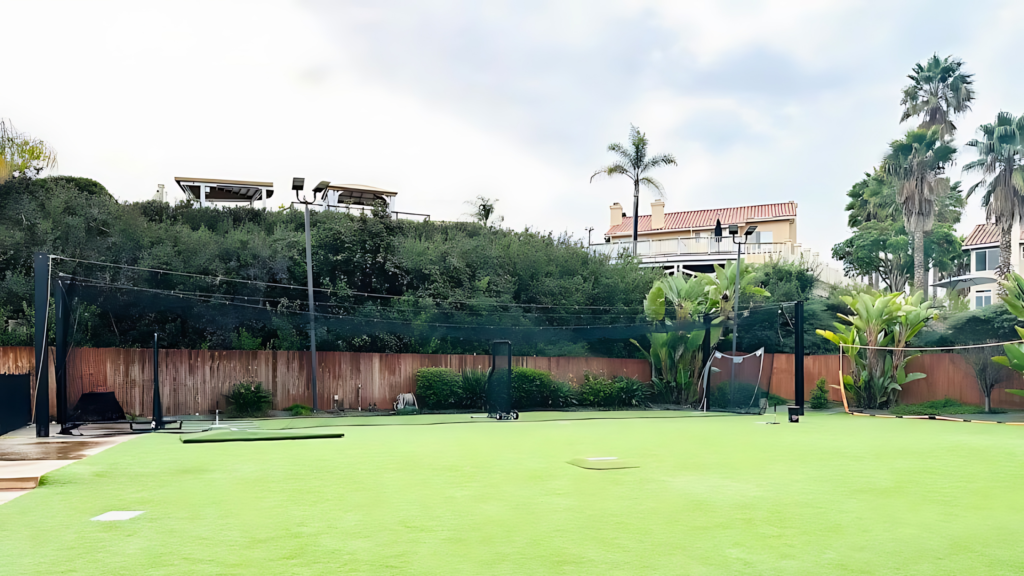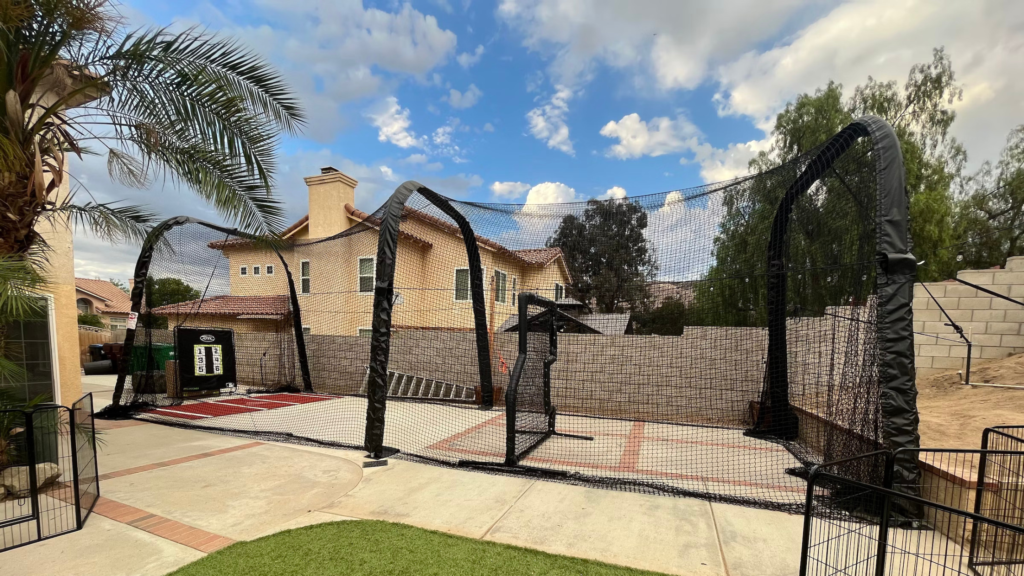Turf vs Concrete: Which Surface is Best for Your Backyard Batting Cage?
A batting cage is a fantastic addition to any backyard or training facility, providing a dedicated space to practice baseball and softball skills. When building a backyard batting cage, one of the key decisions is choosing the right surface material. Two popular options are turf and concrete, each offering unique benefits and drawbacks. In this article, we’ll compare turf and concrete as surface materials for batting cages, exploring their pros and cons to help you make an informed decision. Let’s dive in!
Why the Surface Material Matters
The surface of your batting cage impacts everything from safety and maintenance to comfort and cost. Here’s why it matters just as much as choosing the right netting thickness:
- Safety: Surface type affects traction, shock absorption, and injury prevention.
- Durability: A stronger surface means fewer repairs and longer cage life.
- Maintenance: Some materials require more upkeep than others.
- Flexibility: Turf allows modular placement, while concrete provides a fixed base.
Turf as a Surface Material

Turf is a popular choice due to its natural look and shock-absorbing properties. Many indoor and outdoor batting cages use it for added comfort.
Advantages of Turf
- Soft and Cushioned: Safer on joints—especially for younger athletes.
- Natural Appearance: Offers a clean, grassy look that elevates backyard aesthetics.
- Joint-Friendly: Great for long practice sessions due to its forgiving surface.
- Flexible Install: Can be trimmed and adjusted to any layout.
Disadvantages of Turf
- Maintenance Required: Needs brushing, debris clearing, and occasional disinfecting.
- Wear Over Time: High-use areas can flatten or fray, needing patching or replacement.
- UV Exposure: Outdoor turf may fade unless treated with UV-resistant coatings.
Concrete as a Surface Material

Concrete provides unmatched durability and a strong, stable base—ideal for heavy hitters and permanent installs.
Advantages of Concrete
- Super Durable: Handles daily use, pitching machines, and harsh weather like a champ.
- Low Maintenance: Sweep and go—no grooming required.
- Stability: Keeps your cage firmly grounded, minimizing frame shift.
- All-Weather Friendly: Rain, wind, snow? No problem.
Disadvantages of Concrete
- Hard Surface: Increased risk of injury without padding or turf overlay.
- Permanent: Once poured, there’s no easy moving or reconfiguring.
- Install Costs: Requires labor, forms, and drying time—often best done by pros.
Tips for Choosing the Right Surface
Use these tips to find the best material for your batting cage goals:
- Match Budget to Usage: Turf is cheaper upfront but wears faster. Concrete costs more initially but lasts longer.
- Factor in Climate: In hot or wet regions, choose turf with UV protection or concrete with good drainage.
- DIY vs Pro: Turf can be installed by handy homeowners. Concrete usually requires pro installation.
- Safety First: Concrete needs extra padding around impact zones. Turf provides a naturally safer space for younger players.
🥎 Real Backyard Batting Cages in Arizona Using Different Surface Types
Still unsure whether to go with turf, concrete, or a hybrid setup? Check out these real-world examples from CageList users across Arizona. These cages feature different surfaces, add-on equipment, and cage lengths—giving you real inspiration as you plan your build:
📍 San Tan Power Alley — San Tan Valley, AZ
⚾ Full-length cage with turf base and pro-style feel. Great example of how a backyard setup can feel like a small facility.
📍 AZ Prime Athletics Batting Cage — Chandler, AZ
💪 Concrete foundation and heavy-duty cage perfect for high-rep hitting. Clean, durable, and made for serious training.
📍 Tee & L-Screen Setup — Phoenix, AZ
🪵 Simple turf-based cage with an L-screen and tee included. Great for families who want an easy-maintenance surface.
📍 Bennett’s Home Run Stadium — Queen Creek, AZ
🌵 Turf and gravel combo with professional vibes. Includes pitching machine and great lighting for evening practice.
Want your cage featured on CageList and seen by hundreds of local players? List your cage for free and turn your build into a revenue-generating investment.
Conclusion
Choosing the best surface for your batting cage is more than a matter of preference—it directly affects safety, cost, usability, and maintenance. Turf brings cushion and versatility. Concrete brings strength and durability. By weighing the pros and cons, you can create a space that meets your training needs and lasts for years to come.
✅ Want even more support as you plan your build? Check out our Batting Cage Cost Estimator to help you price out your ideal setup!
